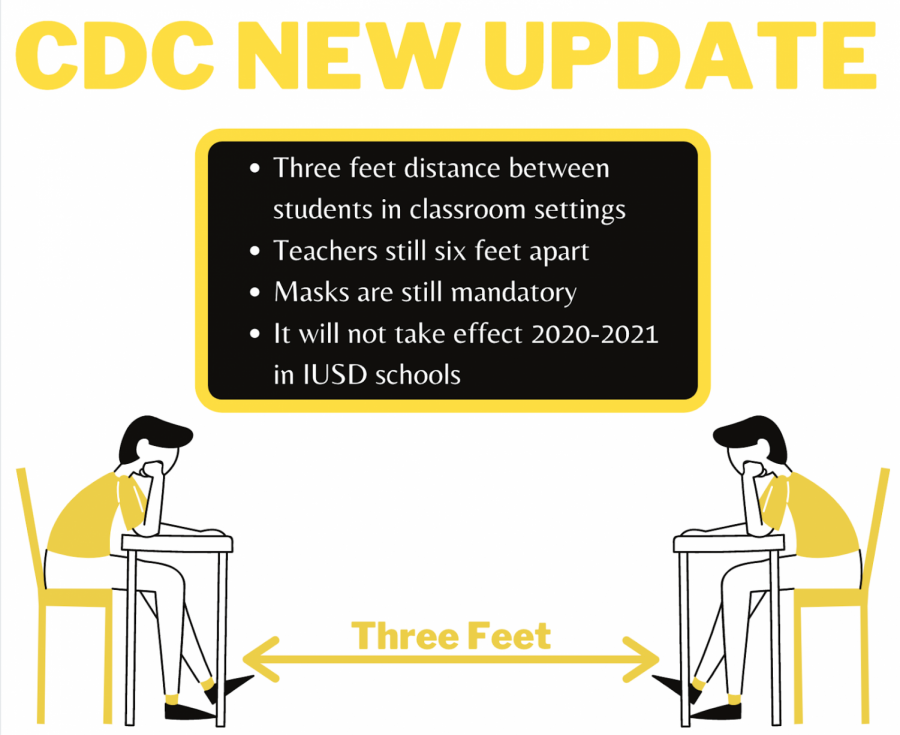CDC’s Classroom Spacing Criteria Changes
The new CDC guideline allows more flexibility within a classroom as only three feet of space is required between students. This is a positive sign for the traditional model in the 2021-22 school year as the allowed flexibility will provide space for more students and shows a positive trend in schools returning to regular models, according to IUSD public information officer Annie Brown.
The CDC updated COVID-19 prevention guidelines on March 20 for K-12 schools establishing a minimum of three feet of space between students seated in a classroom for districts with low, moderate or substantial rates of transmission, according to the California Department of Public Health.
This change will not affect the existing IUSD academic models for the remainder of the 2020-21 school year as Orange County has high rates of COVID transmission, according to principal John Pehrson.
The update does not apply to teachers and staff, who will remain at least six feet apart from other staff and students. Students are still recommended to remain six feet apart during lunch, vocal and instrumental instruction or during other activities in which masks cannot be worn, according to the Los Angeles Times.
“As we communicated with the IUSD community, it is good news for the planning for the summer and fall as there will be more flexibility in the classroom,” IUSD public information officer Annie Brown said. “But, with just over two months remaining, it would be too disruptive for us to implement that three feet change.”
However, the update has affected several music classes as music students can play band instruments inside the classroom six feet apart, and students with string instruments can play three feet apart.
“The ability to play indoors is important because students with wind instruments need to be able to hear each other to understand the arrangement and how to play it,” music substitute teacher Max Maynard said. “Since they are closer together and the acoustics of the room are a lot better, they end up sounding and understanding better.”
This new guideline is a positive sign for IUSD’s commitment to the traditional five-day model for the 2021-22 school year as the update allows for more students to be together in one classroom, according to Pehrson.
Your donation will support the student journalists of Portola High School. Your contribution will allow us to purchase equipment and cover our annual website hosting costs.

Dheeksha Bhima Reddy is the co-Editor-in-Chief for her third and final year on the Portola Pilot. Through her newfound obsession of drinking coffee (cold...




